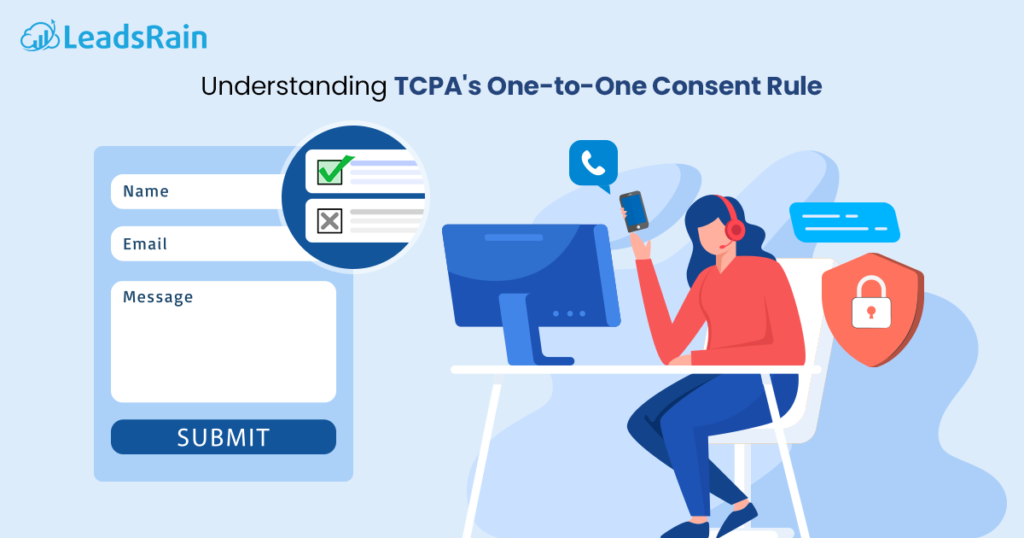Nowadays, many businesses depend on generating qualified leads for overall better enhancement in their success. However, due to the increase in robocalls, businesses find it quite difficult to reach their potential customers. Wait, you still don’t need to worry, with the implementation of robocall mitigation strategies and advanced technologies your business can experience a better version of customer engagement.
The market of robocall mitigation will be valued at $5.4 billion by the end of 2023 and is expected to be almost $18.05 billion with a 12.7% CAGR by the end of 2033.
Understanding The Legal Aspects of Robocalls
The legal aspect of robocalls signifies the recent laws and regulations that the FCC (Federal Communication Commission) automated to stop unwanted calls.
But what are robocalls?
They are prerecorded or we can say, automated calls which are formed by a huge number of receivers at once. These robocalls can be used for several grounds, like telemarketing, political campaigns, and reminder calls.
The laws and regulations placed by government and regulatory bodies to protect and safeguard individuals from any fraudulent or spam calls.
Let’s go on some aspects of regulations that were implemented in robocalls;
- Organizations are required to obtain the recipient’s consent before making robocalls.
- Organizations must maintain Do-Not-Call (DNC) Lists and are legally required to respect these lists and refrain from calling registered numbers.
- Significant fines and penalties can be imposed if any laws and regulations are violated in the case of robocalls.
Thus, it’s very crucial for individuals as well as for organizations to have a better understanding and knowledge regarding these basic regulations for robocalls which aims to ensure compliance and safeguard themselves from any scams and privacy violations.
How Advanced Technologies Are Making Robocall Mitigation Stronger?
Artificial intelligence. To detect and clarify robocalls, the aim of artificial intelligence is just to analyze call patterns and the behavior of the caller. AI algorithms can promptly identify spam callers as well as messages that are pre-recorded.
Call blocking. This technology operates several combinations like blacklists, advanced predictive algorithms, and evaluation of caller ID to identify and recognize to block robocalls. Call-blocking technology aims to block suspected robocalls immediately before they get into touch with a call.
Call authentication. This technology prevents robocalls from spoofing numbers and boosts the trust for the call. Protocols such as STIR ( Secure Telephone Identity Revisited) / SHAKEN ( Signature-based Handling of Asserted information using toKENs) can be implemented to identify the authenticity of each caller ID.
Machine learning. With each new detection feature and advanced innovation, the system of ML enables more logic and efficiency in recognizing robocalls. To enhance more accuracy in identifying and blocking them, ML algorithms continuously aim to learn and identify robocall patterns.
Challenges Accepted by Lead Generation in Robocall Outbreak
Numerous challenges and problems are being faced by outbound lead generation activities because of the robocall outbreak. The word “robocall outbreak” signifies the problem of automated calls or pre-recorded messages that are made to large numbers of individuals without their consent.
According to FTC (Federal Trade Commission) plans for 2023, scams are the topmost robocall category with around 155.4 million.
Firstly, consumers’ trust level has degraded due to a negative reputation led by robocalls. This creates a harder situation for organizations and businesses to reach their leads and capture them effectively.
Secondly, the rise in call-blocking technology has led consumers to reject unwanted calls which creates a hurdle for outbound activities. Organizations find it difficult to connect with their potential leads as people are enabling this tool.
According to an expert’s prediction, approximately $58 billion in subscribers will be lost due to unwanted robocalls in 2023.
If we summarize it, the major challenges could be;
- Compliance issues due to stringent regulations imposed by government bodies to curb robocall misuse.
- Difficulty in distinguishing between legitimate outbound calls and illegal robocalls, leading to legitimate calls being blocked or ignored.
- Increased operational costs due to the need for advanced technologies to bypass call-blocking systems and ensure legitimate outreach.
- Negative impact on brand reputation for businesses engaging in outbound lead generation due to consumer association of all outbound calls with robocall scams.
- Reduced effectiveness of traditional telemarketing strategies, leading to the need for more personalized and targeted outreach methods.
- Challenges in implementing effective call analytics and metrics due to the interference of call-blocking technologies, resulting in inaccurate performance evaluations.
Well, to overcome this tough situation from the robocall outbreak, organizations, as well as businesses, must abide by strict rules and regulations, increase trust levels, and optimize advanced technologies to overcome the negative impact of robocalls.
The Positive Impact of Robocall Mitigation Evolution on Lead Generation
Understanding the impact of robocall mitigation you will gain some valuable insights about how these measures shaped the lead generation process. This will assist you in adopting evolution to better your lead generation activities.
1. Sharp mitigation in spam calls
There has been a remarkable reduction in the number of spam calls that were received by customers due to the development of robocall mitigation.
Some studies have shown that on average, there has been approximately a 25% reduction in spam calls over the past year.
2. Surge in answer rates
As there is a decline in the number of spam calls, approximately 15% of answer rates have risen for outbound lead generation calls.
This signifies that your businesses can now easily build initial contact with a large number of potential leads which further leads to a rise in conversion rates.
3. Superior call quality
Almost 30% reduction has been observed in the background noise, call drops, and other technical problems; which leads to building more productive conversations between business and your potential leads.
With the improvement in robocall mitigation technology, the overall quality has been enhanced while calling.
4. Reduction in time and cost
About 20% reduction can be achieved in cost by eliminating the number of spam calls so that businesses can efficiently focus and allocate more time towards genuine leads.
5. Better targeting option
Businesses are now enabled to rectify their effective targeting strategies with the support of data analytics and advanced algorithms.
This resulted in a rise in lead quality with approx 10%. Due to better targeting options, one can easily contact individuals who seem interested in their products or services.
6. Tweak in conversion rates
Approximately 12% rise has been attributed to conversion rates as outbound lead generation activities are more targeted and fully focused.
This represents that through numerous advantages of robocall mitigation, businesses in today’s time can greatly achieve higher numbers of sales and revenue.
7. Reducing Regulatory compliance
All the outbound lead generation activities have observed an almost 40% reduction in legal issues, fines, and penalties.
Businesses are strictly permitted to comply with strict regulatory requirements regarding unsolicited calls due to the growth in robocall mitigation technology.
How to Change the Lead Generation Approach in Robocall Mitigation Era?
Let’s examine how businesses had to adapt these strategies so they can efficiently generate leads while operating the issues caused by robocalls. So, let’s discover some changes in lead generation in the era of robocalls and utilize them to stay ahead in this dynamic environment.
Optimizing advanced technologies
This seamless advanced technology will enhance user experience and save time and effort. Maximize advanced and upgraded technologies like AI-powered and automation tools, which will help you to streamline your lead generation processes efficiently. Or Adopting a sales dialer software to manage manual calls with verified leads can be another technology option. These automation tools can effectively qualify leads by gathering relevant data and information.
Obtaining prior consent for Prospective Clients
Before initiating the call, consent must be obtained. Confirm with your potential leads regarding their preferences/interests through email or text messages by executing a double opt-in process.
Offering tailored solutions to Clients
Establishing an authentic relationship with your potential client is the first step toward your success. Offering personalized solutions based on an individual’s specific needs and preferences along with considering their pain points will be more effective solutions than any other.
Adopting Omnichannel Marketing Communication
Promote usage of various outbound marketing channels like SMS, email, and calls, of course on opt-in leads and also approaching to some inbound marketing too, like social media platforms as well as SEO to opt for some organic traffic. Try to expand your lead generation efforts and practice a multifold lead generation approach.
Analysis and Tracking
Optimize tools like real-time monitoring, Live updates to CRM systems, Auto-opt-out from follow-ups for not interested leads when you approach outbound marketing communication and Google Analytics and analytics on social media campaigns to track the effectiveness of your inbound lead generation campaigns. Try to recognize the latest trends and refine the strategies accordingly from the data collected through outbound efforts.
Conclusion
In the end, the impact of robocall mitigation on outbound lead generation activities has been noticed in various aspects. Through effective strategies, and adapting advanced technologies, businesses can increase their level of reputation, and trust and efficiently foster trustworthy relationships with potential leads.




